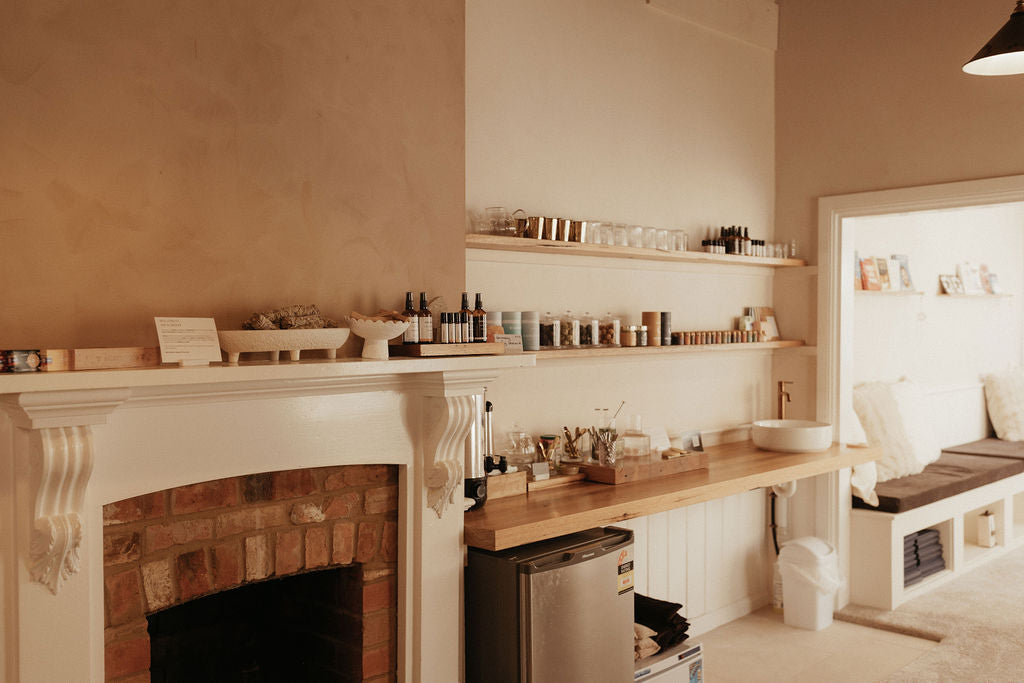One of the questions we’re asked most often is how to get that soft, cloud-like movement on a limewashed wall. The truth is, it’s not about using thick paint or special additives, it comes down to thin layers, the right amount of water, and how you move the brush.
Thin coats
A common misconception is that applying limewash more thickly will create more texture. In reality, thicker coats dry unevenly, can crack, and often end up looking chalky or patchy. Limewash performs best when it can breathe and absorb into the surface. Two thin coats will almost always outperform one heavy one. The paint should be mixed so that it glides easily off the brush, fluid rather than pasty. When it moves across the wall easily, the lime and pigment settle naturally as they dry, creating depth and variation without visible buildup.
Start with a clean, primed surface and apply the first coat using relaxed, overlapping strokes. Don’t overwork it; a little inconsistency at this stage helps the final result. Once the first coat has fully dried, apply the second coat. Crossing your strokes helps avoid visible lines and builds a soft, blended finish.
For most people, two coats is the perfect place to stop. This creates subtle movement and variation that feels calm and natural, without drawing too much attention. If you prefer a little more texture or want to highlight areas of the wall, you can go further, but it’s not necessary if you're looking for that subtle effect.
Holding the brush
How you hold the brush also makes a difference. Many people find they have more control by holding the brush closer to the bristles rather than gripping the end of the handle. This gives you firmer pressure and lets the brush fan out against the surface. For softer variation, hold the brush further back so your movement is looser and more relaxed. It’s worth stepping back every so often to see how the texture is forming across the wall, it’s easy to get caught up in small sections and lose sight of the overall movement.
Brush technique
A technique that makes a noticeable difference, especially on the last coat, is what we call the asterisk or cloud method. Load your brush, then place it against the wall and fan out your strokes from one central point, almost like painting an asterisk. Each burst overlaps slightly, forming an irregular, cloud-like shape. Move to a different section of the wall and do the same thing, and gradually work back to the first cloud, blending the edges where the two patches meet. This approach breaks up uniform brush lines and gives the surface a soft, organic variation. Because the brush moves in multiple directions, the limewash dries with subtle tonal shifts instead of flat streaks, the kind of texture you see in high-end finishes but achieved with simple technique.
Getting the strongest texture
If you do want a stronger effect, you can add a third coat once the first two are completely dry. To get the strongest texture possible, instead of recoating the entire wall, lightly brush over selected areas using the same asterisk motion. This extra layer adds small differences in tone and depth. It’s an easy way to create a slightly more weathered or dimensional look, and not covering the entire wall adds more texture because the surface ends up with slight differences in depth and sheen. The extra layer catches light differently wherever it overlaps, giving those parts of the wall a little more movement and shadow, while the areas with only two coats stay softer and flatter.
This contrast between coated and uncoated sections mimics the way traditional lime plaster naturally weathers over time, with uneven layers that build quiet texture rather than uniform colour.
Getting good texture from limewash isn’t about doing more; it’s about applying it consistently and letting the materials do the work. Thin coats, a fluid mix, and controlled, overlapping brushwork will usually give you the best result, a wall with quiet depth and movement that feels natural rather than forced.

Share:
Five differences between venetian plaster, micro cement and limewash paint
Introducing Dalray Primer: A breathable foundation for limewash